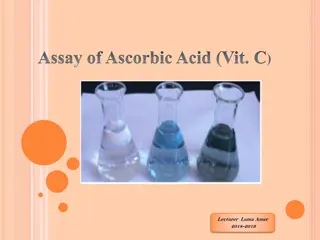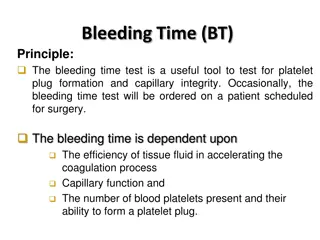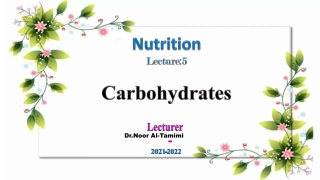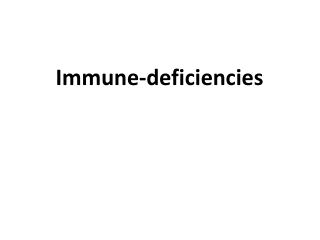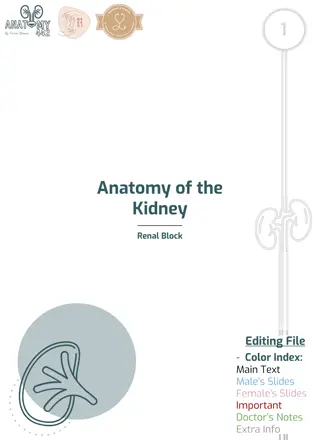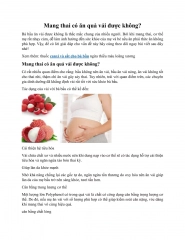Vitamin A Deficiency (Hypovitaminosis A)
Learn about the causes, symptoms, and effects of Vitamin A deficiency, including night blindness, corneal keratinization, and impaired immune function. Explore the epidemiology and pathogenesis of this condition.
Download Presentation
Please find below an Image/Link to download the presentation.
The content on the website is provided AS IS for your information and personal use only. It may not be sold, licensed, or shared on other websites without obtaining consent from the author. Download presentation by click this link. If you encounter any issues during the download, it is possible that the publisher has removed the file from their server.
- Vitamin A deficiency
- Hypovitaminosis A
- night blindness
- corneal keratinization
- immune system
- epidemiology
- pathogenesis
Presentation Transcript
VITAMIN A DEFICIENCY (HYPOVITAMINOSIS A) By Dr. Hussein AlNaji
A deficiency of vitamin A may be caused by an insufficient supply of the vitamin in the ration or its defective absorption from the alimentary canal. 2 In young animals, the manifestations of the deficiency are mainly those of compression of the brain and spinal cord. . In adult animals, the syndrome is characterized by night blindness, corneal keratinization, pityriasis, defects in the hooves, loss of weight, and infertility. Congenital defects are common in the offspring of deficient dams. Vitamin A may also provide a protective effect against various infectious diseases and enhance many facets of the immune system.
3 Epidemiology 1- Primary vitamin A deficiency a- In animals fed diet deficient in vitamin A or its precursors (Carotene) . b- Common in cattle grazing dry pastures for long periods. c- Occurs when diet of hand-fed animals is not supplemented with vitaminA
2- Secondary Vitamin A Deficiency a. a- May occur in cases of chronic disease of the liver or intestines because much of the conversion of carotene to vitamin A occurs in the intestinal epithelium and the liver is the main site of storage of the vitamin. b. b- Highly chlorinated naphthalenes (poisoning)interfere with the conversion of carotene to vitamin A. c. c- The intake of inorganic phosphorus also affects vitamin A storage, low phosphate diets facilitating storage of the vitamin.
5 Pathogenesis The major pathophysiologic effects of vitamin A deficiency are as follows. 1- Night Vision and Ocular Abnormalities Ability to see in dim light is reduced because of interference with regeneration of visual purple. Ocular abnormalities occur because of disruption to ocular, retinal, and optic nerve development from midpregnancy onward.
6 2- Cerebrospinal Fluid Pressure : An increase in CSF pressure is one of the first abnormalities to occur in hypovitaminosis A in calves. The increase in CSF pressure is caused by impaired absorption of the CSF from reduced tissue permeability of the arachnoid villi and thickening of the connective tissue matrix of the cerebral dura mater. The increased CSF pressure is responsible for the syncope and convulsions, which occur in calves in the early stages of vitamin A deficiency.
7 3- Bone Growth Vitamin A is necessary to maintain normal position and activity of osteoblasts and osteoclasts. 4- Epithelial Tissues Vitamin A deficiency leads to atrophy of all epithelial cells, but the important effects are limited to those types of epithelial tissue with a secretory as well as a covering function. 5- Embryologic Development Vitamin A is essential for organ formation during growth of the fetus. 6- Immune Mechanisms The effects of vitamin A and -carotene on host defense mechanisms have been uncertain and controversial for many.
8 CLINICAL FINDINGS Similar syndromes occur in all species, but because of species differences in tissue and organ response, some variations are observed. The major clinical findings are set out in the following sections. 1- Night Blindness Inability to see in dim light (twilight or moonlit night) is the earliest sign in all species. 2- Xerophthalmia True xerophthalmia, with thickening and clouding of the cornea, occurs only in the calf. In other species, a thin, serous mucoid discharge from the eyes occurs, followed by corneal keratinization, clouding and sometimes ulceration, and photophobia.
9 3- Ocular Abnormalities A range of ocular deformities, including cataract formation, lens luxation, microphthalmia, and reduction in the size of the optic nerve head, occurred in calves with low serum vitamin A and E concentrations. 4- Changes in skin Heavy deposits of bran like scales on the skin are seen in affected cattle. 5- Reproductive Efficiency Vitamin A deficiency cause Loss of reproductive function male and female. In the male, libido is retained but degeneration of the germinative epithelium of the seminiferous tubules causes reduction in the number of motile, normal spermatozoa produced. In the female, caused placental degeneration leads to abortion and the birth of dead or weak young. 6- Nervous System Signs related to damage of the nervous system include the following:
10 6. Nervous System Signs related to damage of the nervous system include the following: a. Paralysis of skeletal muscles caused by damage of peripheral nerve roots. b. Encephalopathy caused by increased intracranial pressure lead to convulsion. c. Blindness caused by constriction of the optic nerve canal.
CLINICAL PATHOLOGY 11 1- Plasma Vitamin A Vitamin A levels in the plasma are used extensively in diagnostic and experimental work. Differential Diagnosis Cattle Convulsive form of vitamin A deficiency in cattle must be differentiated from the following: 1- Polioencephalomalacia: characterized by sudden onset of blindness, head-pressing, and tonic-clonic convulsions, usually in grain-fed animals but also in pastured animals ingesting an excess of sulfate in water and grass 2- Hypomagnesemic tetany: primarily in lactating dairy cattle on pasture during cool windy weather; characterized by hyperesthesia, champing tonic-clonic convulsions, normal eyesight and tachycardia, and loud heart sounds.
3- Lead poisoning: in all age groups, but most commonly in pastured calves in the spring; 12 characterized by blindness, tonic-clonic convulsions, champing of the jaw, head-pressing, and rapid death . 4- Rabies: in all age groups; characterized by bizarre mental behavior, gradually progressive ascending paralysis with ataxia leading to recumbency, drooling saliva, inability to swallow, normal eyesight, and death in 4 7 days. Treatment 1- Animals with curable vitamin A deficiency should be treated immediately with vitamin A at a dose rate equivalent to 10 to 20 times the daily maintenance requirement. As a rule, 440 IU/kg BW is the dose used.
13 Thank You






